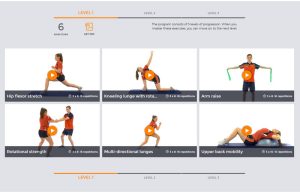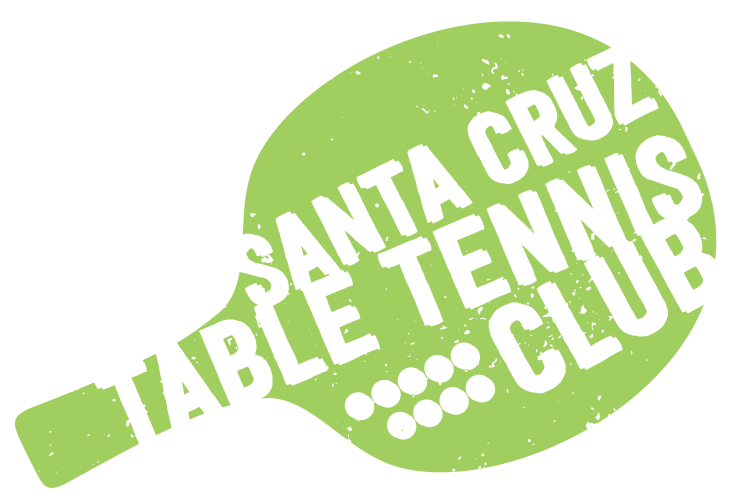For those who are very serious about improving their game, this post has some good advice. Author is Álvaro Munno, a top Argentine player.
tips
4 Steps with Dimitrij Ovtcharov to learn the Worlds Best Tomahawk Serve
Exercise and training for table tennis
 I was not knowledgeable about appropriate training for table tennis until I discovered the Norwegian site: fittoplay.org. I have yet to try these exercises, but it looks very well thought out (in English). Also appears to be free. Let me know if you try these out.
I was not knowledgeable about appropriate training for table tennis until I discovered the Norwegian site: fittoplay.org. I have yet to try these exercises, but it looks very well thought out (in English). Also appears to be free. Let me know if you try these out.
How to get more spin on serves – Tutorial
Good tip for increasing spin.
5 Simple Tips for Winning your Matches
In the interest of sharing and ensuring everyone has an even chance in league, here are 5 things that work well. I sent this today so you’d have time to practice these tactics. And please feel free to ask me for more if they aren’t clear to you.
QUICK DISCLAIMER: Please don’t read this wrong and get the idea that winning is everything and the league is about destroying the other guy. My intention here is to give everyone a little bit of the knowledge that better players already have, that’s all.
- When you are serving, vary your serves. This means make the ball land in different places on your opponent’s court each time you serve (their side of the table can be dividing into roughly 9 squares, so use them!) It’s surprising how even skilled players sometimes serve to the same place over and over. It’s much better to keep them guessing. If you can get them to move for the ball, they will leave where they were and you can often put the next ball back where they were and make an easy point. Of course, you can also vary the speed of the ball when you serve, how short/long it is, the spin on the ball and the height, too. All these things when changed and mixed up can surprise and win you points. Don’t be afraid to experiment. Sometimes players have the hardest times with things you wouldn’t believe.
- When you are receiving your opponent’s serves, judge the ball. The most common mistake is judging the ball wrong. See no. 1. They are trying to surprise you, move you, make you think the ball has a certain spin when it actually has a different spin. At his camp, Danny Seemiller (once #17 in the world) told me, “Jim, returning serve is like getting in a street-fight. The other guy is trying to punch you in the face. You have GOT to get ready!!” So, don’t get sucker-punched. To avoid it, stay very stable and balanced so your eyes can focus on the ball very closely. Lean your head forward so your eyes are closer to the ball. Do not move until they actually touch the ball with their paddle. Wait and watch very carefully. Do not crowd the table or else it’s easy for them to serve fast right at you and win the point. In most cases, use a short stroke and play the ball to the middle of the table. That ensures sidespin balls don’t bother you too much. Also, keep in mind that you will learn to return better as your judgment improves. So at first you miss a lot but after a while you get a lot better. Enjoy the process and use what you learn to improve your own serves! There’s nothing better than giving them back what they were giving you and seeing if they can handle it.
- If possible, attack their serves. I already told you that you want to vary your serves and try to benefit from surprise, placement, spin. Your opponent is trying the same things. You can’t let them dominate you or you won’t win. They may have great serves and be driving you crazy, but putting back weak returns just means them hitting winners. So, try to learn from your mistakes and judge the ball carefully, and see if you can do something/anything that improves your chances. For example, even a high lob can force a mistake if the other person isn’t expecting it. Better is putting the ball deep to either corner of the table, the deeper the better. For returning short serves, the ball is very close to the net and that helps you do some fun things. First, you can try to get close to the ball (move your dominant foot beneath the table near where the ball hit the table on your side and lean over the table so your head and eyes are close to the ball and you can judge it right) – and then try to drop it over the net even shorter than they served. Even more fun is to step in close like that and pretend you’re going to push the ball short, but at the last second you roll your paddle up and over – a little flip motion, very soft touch, and you float the ball right at them. It looks like an easy ball to kill but it’s very hard to hit it effectively. Overall, keep service return fun and positive by trying to gain the initiative and not letting the other guy just serve and dominate the match. If the same thing happens several times, you really want to try to change something/anything to change what’s happening. It can make all the difference.
- Try to be the first person to attack – or another way we say it is to be the first person to loop/topspin, or be the first person to “open,” which means attack. Table Tennis is unlike pro football. Defense doesn’t win championships in table tennis, offense does. Knowing this fact, your basic strategy at the table is to be the first person to get an attack shot in. BUT UNDERSTAND that an attack does not mean to murder the ball or smash it or kill loop it. It’s not about that. An attack is just being the first to do something/anything offensive, and that can be as simple as topspinning a slow spinny ball at your opponent after they thought they gave you back a ball that had a lot of backspin/chop on it. Another attack is placing the ball where they can’t reach. It’s not a hard hit, just a carefully placed hit. Back to getting the first attack in, obviously you can’t attack if you’re serving until you’ve served and waited for the ball to come back. So, when you’re serving your objective is to serve so that they CANNOT attack. That’s important. All good players serve to avoid being attacked and to setup their first attack on the 3rd ball, which is their return of your serve. Ball 1. the serve. Ball 2. their return. Ball 3. your attack. So, try to serve a ball that when it comes back you get to do what you want. And, when they serve, try to attack (see no. 3 above). Between 2 good players, it becomes a game of cat and mouse seeing who gets their attack in first. Keep trying to win that chess match and if you get yours in the most you will usually win the game and match.
- Try to handcuff them and prevent their attack by either playing to their “weak” side over and over or playing to the “decision point,” also known as the middle. This sounds complicated but it’s not. Almost every player has a week side, either forehand or backhand. It’s usually better to play to someone’s weaker side over and over than going to their strong side. It can ensure they don’t attack until they get you to move the ball closer to their strong side, or sometimes they’ll run around to get their strong side to the ball letting you play the ball back to the part of the table they left open! Playing to the decision point means the pocket or elbow of their playing arm. If you can put the ball there, they have to choose between hitting with their forehand or their backhand. That’s difficult and often forces a miss-hit ball. Keep in mind though that people stand in different places at the table. So, when coaches say play or control the middle, they are talking about the player’s middle not the middle of the table. Ultimately though it’s about judging where your opponent is standing and trying to place the ball to their elbow. When you get it right and hit the spot it’s like hitting a jackpot because a lot of players – even the best – will try but end up hitting the ball right off the table for an easy point to you. And usually if they do manage to get the ball back, you can attack that ball and win that point.
Okay, there’s 5 good tips for you. The long paragraphs after the tips are just to explain. The tips themselves are short so that they are easy to remember and use mentally in a match. You can write them on paper if you want and read them before playing. I always have some cheatsheets like this with me at tournaments.
